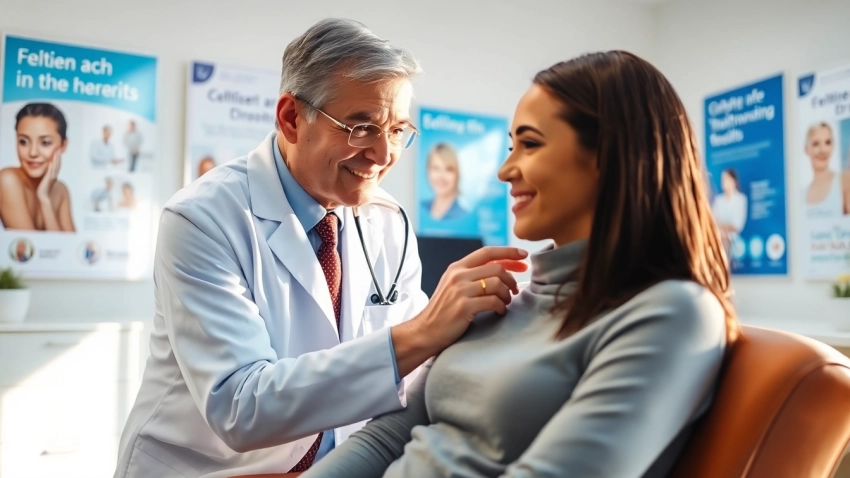
Effective Strategies for Acne Treatment: Unlocking Clear Skin Solutions
Understanding Acne Treatment: Causes and Types
Acne is one of the most common skin conditions affecting individuals of all ages, particularly teenagers. The journey to finding effective Acne Treatment can be a challenging process, as various factors contribute to its development. Understanding the different types and causes of acne provides a foundation for selecting the best treatment options. In this article, we will delve deep into the many aspects of acne treatment, from understanding the condition to exploring innovative approaches and the significance of personalized care.
1. Common Types of Acne
Acne manifests in multiple forms, each with its unique characteristics. The most common types include:
- Comedonal Acne: This type includes closed comedones (whiteheads) and open comedones (blackheads). These are characterized by clogged pores and can lead to inflammatory lesions.
- Inflammatory Acne: This involves red, swollen, and painful bumps or cysts. Techniques such as laser treatment can often be effective against this type.
- Pustular Acne: Identified by pus-filled lesions, pustular acne often appears on the face, chest, and back.
- Cystic Acne: This type is more severe and involves painful, large cysts beneath the skin. Cystic acne requires more aggressive treatment methods.
2. Causes of Acne
Understanding the causes of acne is pivotal for effective treatment. The major contributors to acne formation include:
- Hormonal Changes: Fluctuations in hormones, especially during puberty, menstruation, or hormonal therapies, can increase oil production in the skin, leading to clogged pores.
- Excess Oil Production: Sebaceous glands can become overactive, leading to excessive sebum on the skin.
- Pore Clogging: Exposure to environmental pollutants or products that do not suit your skin type can obstruct the hair follicles.
- Bacterial Growth: The presence of cutibacterium acnes, a type of bacteria that thrives in clogged pores, can exacerbate acne conditions.
- Diet and Lifestyle: Poor diet, stress, and lack of sleep can negatively affect skin health, potentially leading to acne flare-ups.
3. Impact of Hormones on Acne
The link between hormones and acne is significant, particularly in adolescents and women. Hormonal fluctuations can trigger the sebaceous glands to produce more oil. This increased oil production, combined with dead skin cells, leads to clogged pores. Based on studies, certain hormonal therapies, such as birth control pills that regulate hormones, have shown efficacy in reducing acne severity in women.
Topical Treatments in Acne Treatment
Topical therapies are often the first line of defense against acne. Here, we delve into some of the most effective topical treatments available.
1. Retinoids and Their Effectiveness
Retinoids, derived from Vitamin A, are an essential component of acne treatments. They function by promoting cell turnover and preventing the clogging of hair follicles. Popular retinoids include:
- Tretinoin: Known for its robust efficacy, effective against both acne symptoms and post-acne scars.
- Adapalene: This retinoid is gentler on the skin and suitable for sensitive skin types.
Studies have consistently demonstrated that retinoids can lead to significant improvements in the severity of acne when used regularly.
2. Benzoyl Peroxide: How It Works
Benzoyl peroxide is a powerful topical agent known for its antibacterial properties. It works by reducing inflammation and preventing bacterial growth in clogged pores. Available in various formulations (gels, creams, and washes), it’s advisable to start with lower concentrations to gauge skin tolerance. Clinical evidence suggests that benzoyl peroxide is particularly effective for mild to moderate acne.
3. Natural Alternatives to Topical Treatments
Some individuals prefer natural remedies for acne treatment. Natural alternatives include:
- Tea Tree Oil: Possesses antibacterial properties and has been shown in studies to be as effective as benzoyl peroxide for mild acne.
- Aloe Vera: Known for its soothing properties and can help reduce inflammation associated with acne.
- Green Tea Extract: Applied topically, it can help reduce oil production and fight inflammation.
While these natural alternatives can be beneficial, it’s recommended to conduct a patch test first to avoid adverse reactions.
Oral Medications for Acne Treatment
For moderate to severe cases of acne, oral medications may be necessary. These include antibiotics, hormonal treatments, and isotretinoin.
1. Antibiotics: When and How to Use
Antibiotics are prescribed to reduce inflammation and bacterial growth. Commonly prescribed antibiotics include:
- Tetracyclines (Doxycycline, Minocycline): These are effective against inflammatory acne.
- Macrolides (Erythromycin, Azithromycin): Often used for patients who cannot tolerate tetracyclines.
While antibiotics can be effective, they are usually prescribed for short durations to prevent antibiotic resistance.
2. Hormonal Treatments: The Role of Birth Control
Hormonal treatments, particularly oral contraceptives, can be an effective option for women suffering from acne. They help regulate hormones that stimulate oil production in the skin. Combined estrogen and progestin pills are most commonly used for this purpose. Clinical studies indicate that hormonal treatments can lead to significant reductions in acne severity among women.
3. Isotretinoin: Understanding the Treatment
Isotretinoin, known by the brand name Accutane, is a potent retinoid medication used for severe, cystic acne. While it can be highly effective, it comes with potential side effects, including dry skin and increased sensitivity to sunlight. Patients are closely monitored during treatment due to potential risks, including teratogenic effects in pregnant women. Isotretinoin has shown long-term benefits, often leading to a significant reduction in acne recurrences.
Innovative Approaches in Acne Treatment
In addition to traditional therapies, innovative approaches are being developed to enhance acne treatment outcomes.
1. Light and Laser Therapy
Light and laser therapies are emerging as effective treatments for acne. They work by targeting bacteria within the skin or reducing inflammation. Treatment types include:
- Blue Light Therapy: Targets the bacteria responsible for acne, reducing their presence.
- Laser Treatments: Help minimize acne scars and improve overall skin texture.
Clinical studies have shown that these treatments can lead to significant improvements in acne severity, providing a valuable alternative for patients who do not respond to traditional therapies.
2. Chemical Peels and Microdermabrasion
Chemical peels involve the application of a solution that exfoliates the outer layer of the skin, helping to unclog pores and remove dead skin cells. Microdermabrasion, on the other hand, is a mechanical exfoliation technique that can reduce the appearance of acne scars. Both methods have been shown to enhance skin texture and promote healing.
3. Future Trends in Acne Treatment
Research continues to evolve, focusing on personalized acne treatments based on genetic factors, lifestyle, and specific skin types. Improvements in topical formulations, including enhanced delivery systems and the integration of probiotics, are also being explored to optimize treatment outcomes.
Personalized Acne Treatment Plans
With the myriad of available treatments, creating a personalized acne treatment plan is essential for effective management of the condition.
1. Importance of Consulting a Dermatologist
Consulting a dermatologist is paramount. They can assess the individual’s skin type, the severity of acne, and any other underlying health issues that may affect treatment options. Dermatologists can recommend a tailored approach, drawing upon a combination of therapies based on clinical evidence and patient needs.
2. Creating a Customized Skincare Routine
Implementing a consistent, customized skincare routine is crucial for managing acne. This routine should be tailored to the individual’s specific skin type and acne type and may include:
- Gentle cleansers to remove excess oil and dirt.
- Topical treatments combined as recommended by a doctor.
- Moisturizers, as many acne treatments can be drying.
The key is to introduce new products one at a time to monitor for potential irritations.
3. Monitoring Progress and Adjusting Treatments
Regular follow-up appointments are essential for monitoring progress and adjusting treatments as needed. Acne can be a dynamic condition, and what works at one stage may not be effective later. Keeping a skincare diary to track the effectiveness of treatments can be beneficial. Constant communication with a healthcare provider ensures timely modifications and optimizes outcomes.






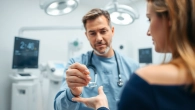
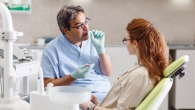
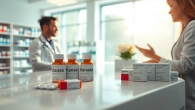


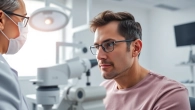
Leave a Reply